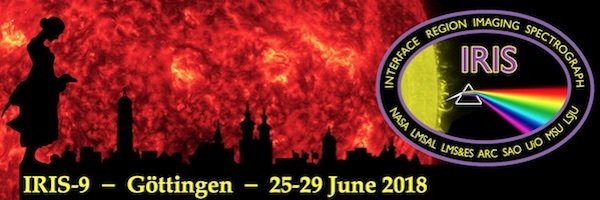
The 9th IRIS workshop was held from 25-29 June 2018 in Göttingen, Germany at the Max Planck Institute for Solar System Research (MPS).
The IRIS workshops promote the scientific achievments related to the Interface Region Imaging Spectrograph (IRIS). This mission combines high-resolution UV spectrographic imaging with advanced numerical modeling in order to gain insight on how the solar atmosphere is energized.
Aims & Themes
The main goal for this meeting was to enhance the collaborative efforts that use IRIS together with ground-based observatories, in the visible, infrared and radio. Special emphasis was paid to the upcoming facilities of DKIST, Parker Solar Probe and Solar Orbiter, and to the recent solar observations with ALMA.
If you are a ground-based observer, you do not have to have worked on IRIS data before to participate in the meeting. In fact, the workshop will begin with a one-day tutorial that will introduce what data IRIS provides, how to access and process them, and how to extract information on the physics of the atmosphere. The tutorials also addressed the interests of ground-based observers, e.g. how to best coordinate their scientific efforts with IRIS observations. Another topic of discussion was how ground-based observations could fill gaps in the scientific topics covered by IRIS, and how ground-based observations could best profit from the addition of IRIS data to enhance the scientific return.
Traditionally, modeling of the solar atmosphere has played a central role at IRIS workshops, and this one was no exception.
The workshop had the following scientific sessions:
- Fundamental physical processes and modeling
- Chromospheric heating and dynamics
- Magnetic coupling and mass flux through the atmosphere
- Eruptions in the solar atmosphere
- Opportunities and challenges
- Science together with future facilities